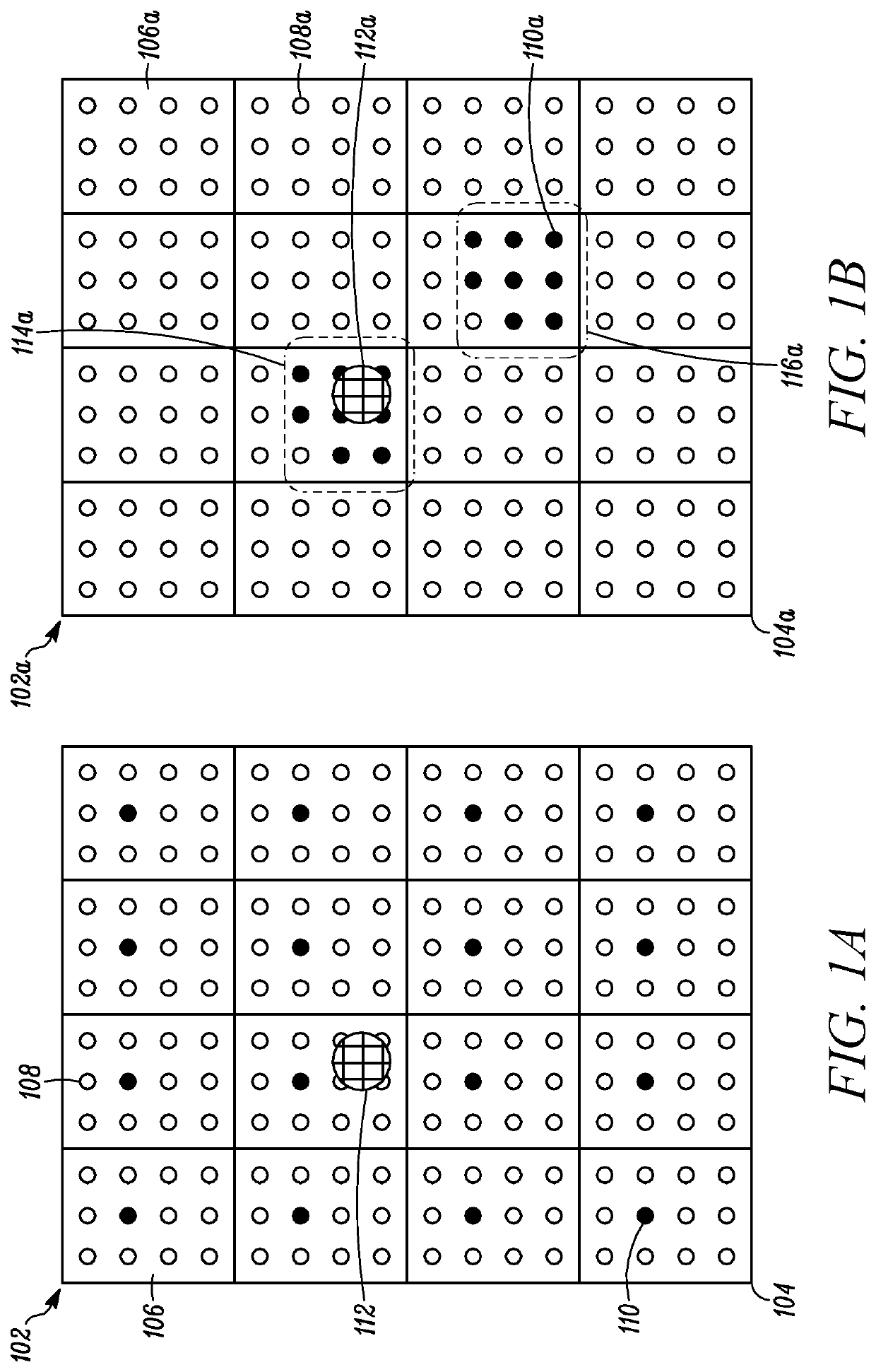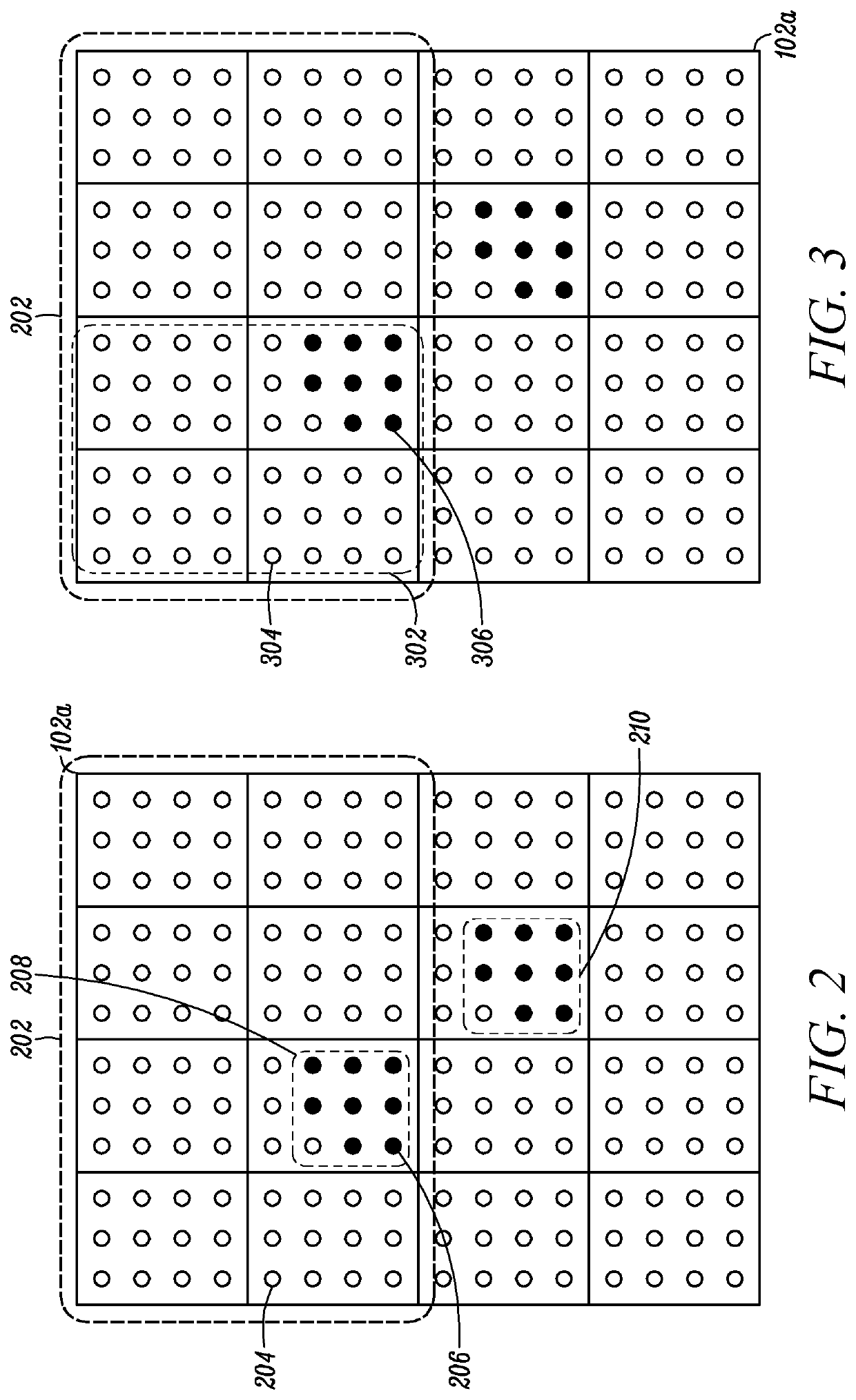Identifying test coverage gaps for integrated circuit designs based on node testability and physical design data
a technology of integrated circuit design and test coverage, applied in computer aided design, instruments, measurement devices, etc., can solve the problems of not being able to achieve 100% test coverage, unable to design a chip without any mistakes, and unable to manufacture a chip without any defects,
- Summary
- Abstract
- Description
- Claims
- Application Information
AI Technical Summary
Benefits of technology
Problems solved by technology
Method used
Image
Examples
Embodiment Construction
[0028]Conventional test coverage analysis tools generally provide an abstract test coverage metric that is based on the number of testable and untestable nodes. For example, consider a scenario where a design / chip comprises 1,000,000 total testable nodes which are connectors of logical cells. The total number of testable nodes can be defined as a total number of nodes in the design (or area of interest) minus a total number of untestable nodes in the design (or area of interest). Nodes can be untestable for various reasons such as, but not limited to, architectural limitations. In this example, 920,000 of the nodes have been tested, and 80,000 of the nodes have not been tested. A conventional test coverage analysis tool would typically utilize only these tested / untested node counts at a modular level to determine that, in this example, the test under analysis has 92% test coverage. The resulting percentage, Pcov, is a representation of a probability of a test program screening a def...
PUM
 Login to View More
Login to View More Abstract
Description
Claims
Application Information
 Login to View More
Login to View More - R&D
- Intellectual Property
- Life Sciences
- Materials
- Tech Scout
- Unparalleled Data Quality
- Higher Quality Content
- 60% Fewer Hallucinations
Browse by: Latest US Patents, China's latest patents, Technical Efficacy Thesaurus, Application Domain, Technology Topic, Popular Technical Reports.
© 2025 PatSnap. All rights reserved.Legal|Privacy policy|Modern Slavery Act Transparency Statement|Sitemap|About US| Contact US: help@patsnap.com



